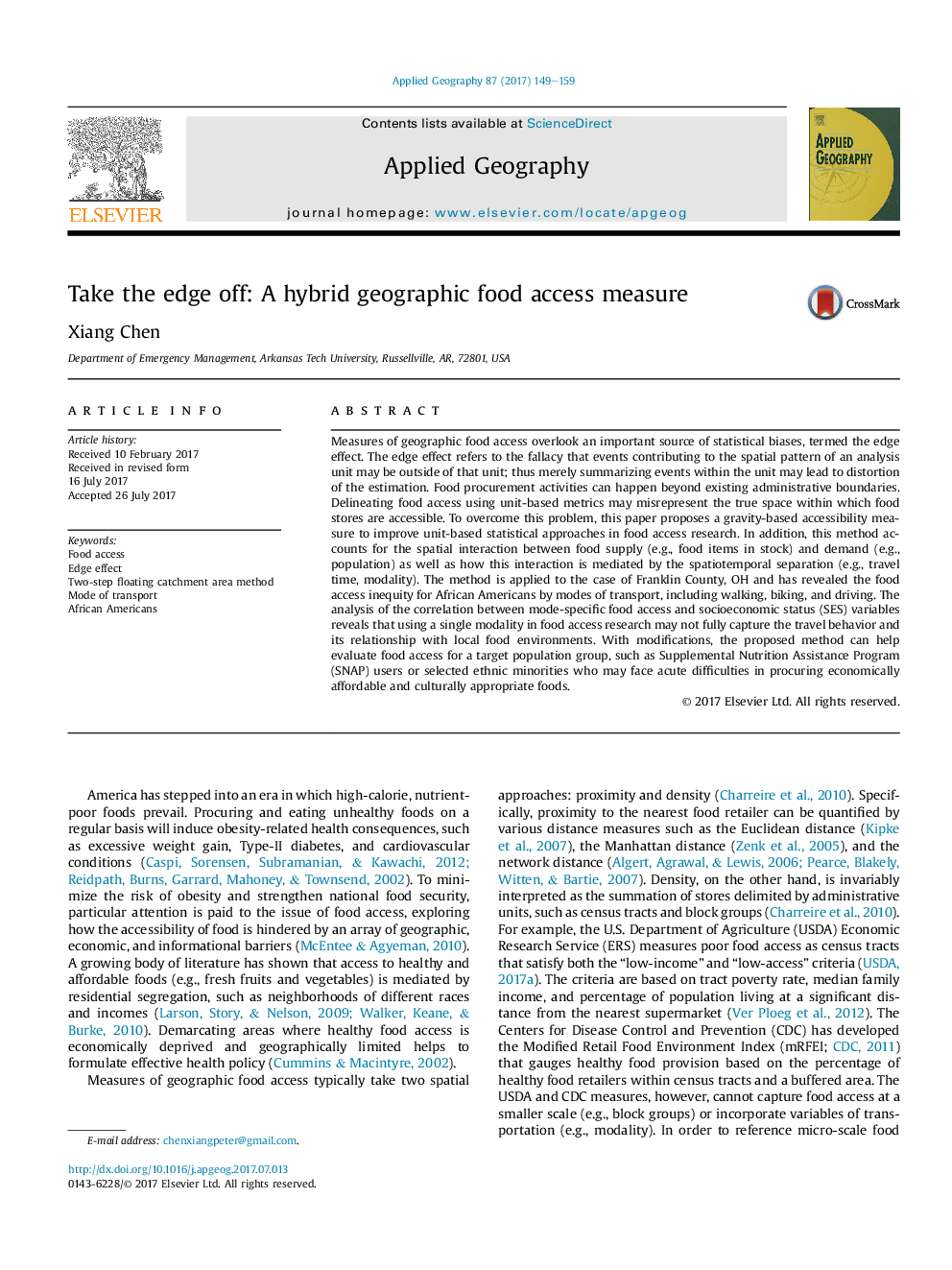| کد مقاله | کد نشریه | سال انتشار | مقاله انگلیسی | نسخه تمام متن |
|---|---|---|---|---|
| 6458382 | 1421030 | 2017 | 11 صفحه PDF | دانلود رایگان |
- The edge effect in food access research is revealed and justified.
- The edge effect is solved by the two-step floating catchment area (2SFCA) method in a food access context.
- Green retailer access is evaluated among African Americans by walking, biking, and driving.
- The correlations between food access and SES were inconsistent among modalities.
Measures of geographic food access overlook an important source of statistical biases, termed the edge effect. The edge effect refers to the fallacy that events contributing to the spatial pattern of an analysis unit may be outside of that unit; thus merely summarizing events within the unit may lead to distortion of the estimation. Food procurement activities can happen beyond existing administrative boundaries. Delineating food access using unit-based metrics may misrepresent the true space within which food stores are accessible. To overcome this problem, this paper proposes a gravity-based accessibility measure to improve unit-based statistical approaches in food access research. In addition, this method accounts for the spatial interaction between food supply (e.g., food items in stock) and demand (e.g., population) as well as how this interaction is mediated by the spatiotemporal separation (e.g., travel time, modality). The method is applied to the case of Franklin County, OH and has revealed the food access inequity for African Americans by modes of transport, including walking, biking, and driving. The analysis of the correlation between mode-specific food access and socioeconomic status (SES) variables reveals that using a single modality in food access research may not fully capture the travel behavior and its relationship with local food environments. With modifications, the proposed method can help evaluate food access for a target population group, such as Supplemental Nutrition Assistance Program (SNAP) users or selected ethnic minorities who may face acute difficulties in procuring economically affordable and culturally appropriate foods.
Journal: Applied Geography - Volume 87, October 2017, Pages 149-159
